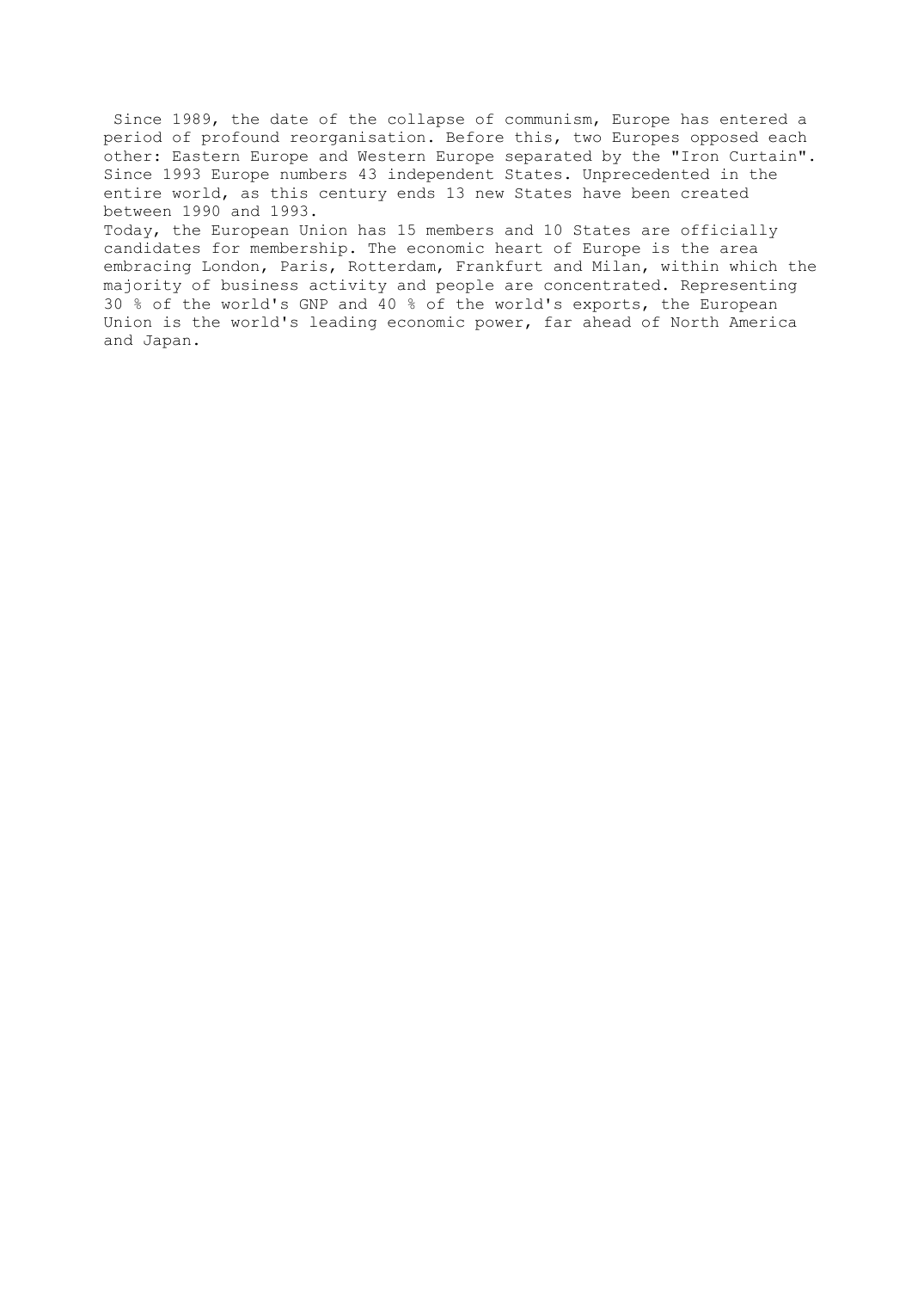Since 1989, the date of the collapse of communism, Europe has entered aperiod of profound reorganisation.
Publié le 23/05/2020

Extrait du document
«
Since 1989, the date of the collapse of communism, Europe has entered a
period of profound reorganisation.
Before this, two Europes opposed each
other: Eastern Europe and Western Europe separated by the "Iron Curtain".
Since 1993 Europe numbers 43 independent States.
Unprecedented in the
entire world, as this century ends 13 new States have been created
between 1990 and 1993.
Today, the European Union has 15 members and 10 States are officially
candidates for membership.
The economic heart of Europe is the area
embracing London, Paris, Rotterdam, Frankfurt and Milan, within which the
majority of business activity and people are concentrated.
Representing
30 % of the world's GNP and 40 % of the world's exports, the European
Union is the world's leading economic power, far ahead of North America
and Japan..
»
↓↓↓ APERÇU DU DOCUMENT ↓↓↓
Liens utiles
- A member of the European Union since 1986, it is one of the poorestcountries in Western Europe, but rapid changes and strong growth areensuring that Portugal is gradually catching up.
- The European Union, of which it has been a member since 1981, has justimposed an austerity plan on Greece.
- Depuis 1989, date de l'effondrement communiste, l'Europe est entrée dansune phase de profonde réorganisation.
- With the fall of communism the collapse of trade with the former USSRplunged this country into serious economic difficulties.
- At the end of 1994, the opening of negotiations between Ireland and theUnited Kingdom about the autonomy of Northern Ireland marked adevelopment in a situation deadlocked since 1920, the date of partitionby the British into Catholic majority Ireland and Protestant majorityNorthern Ireland.


